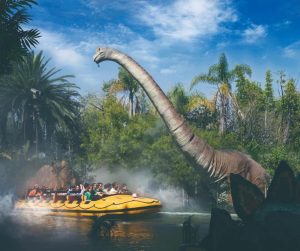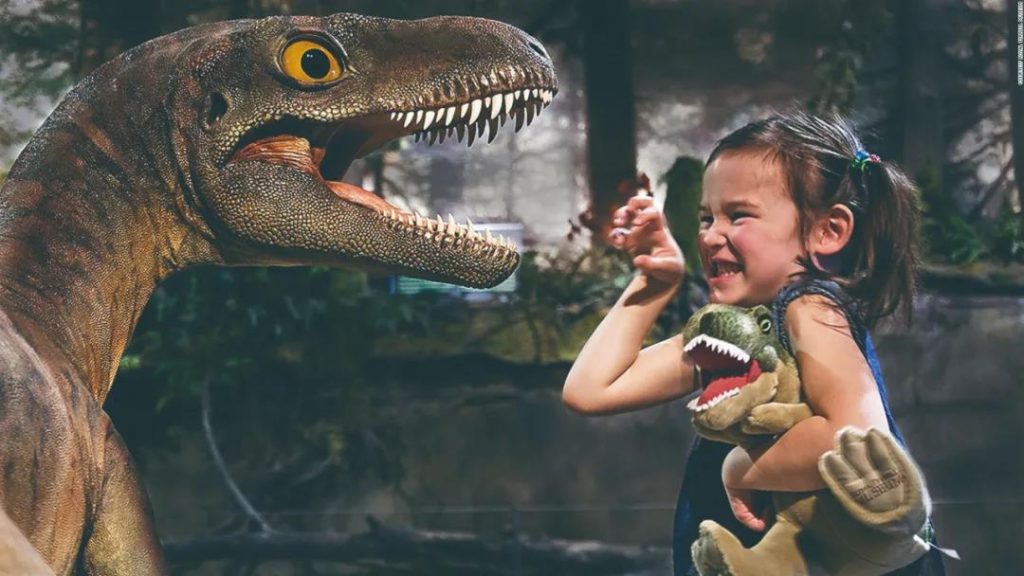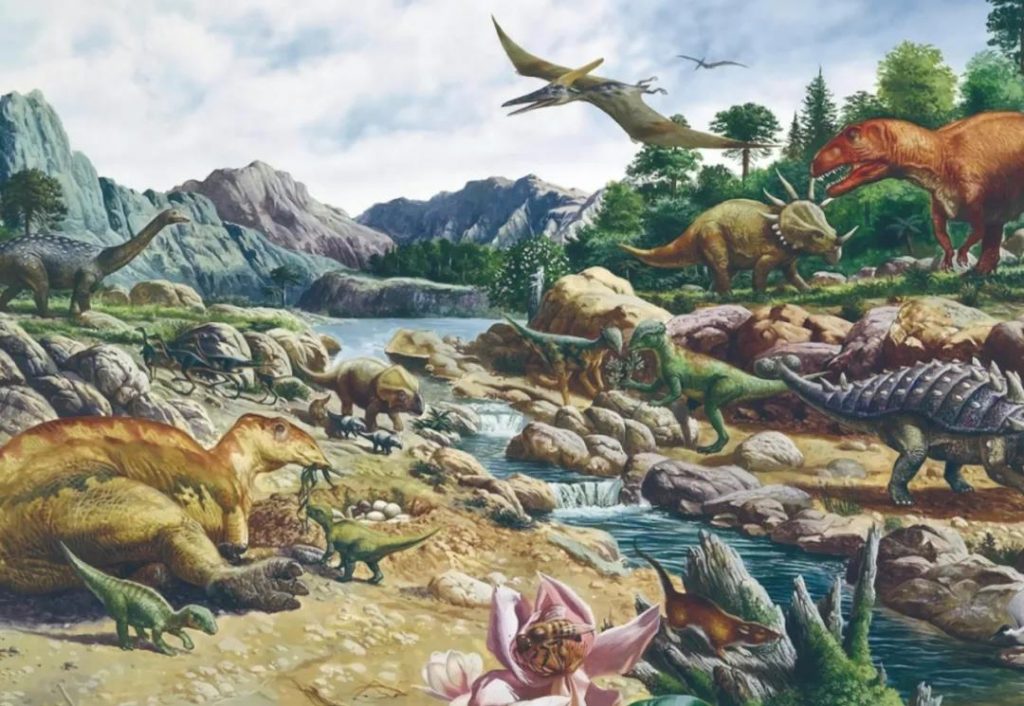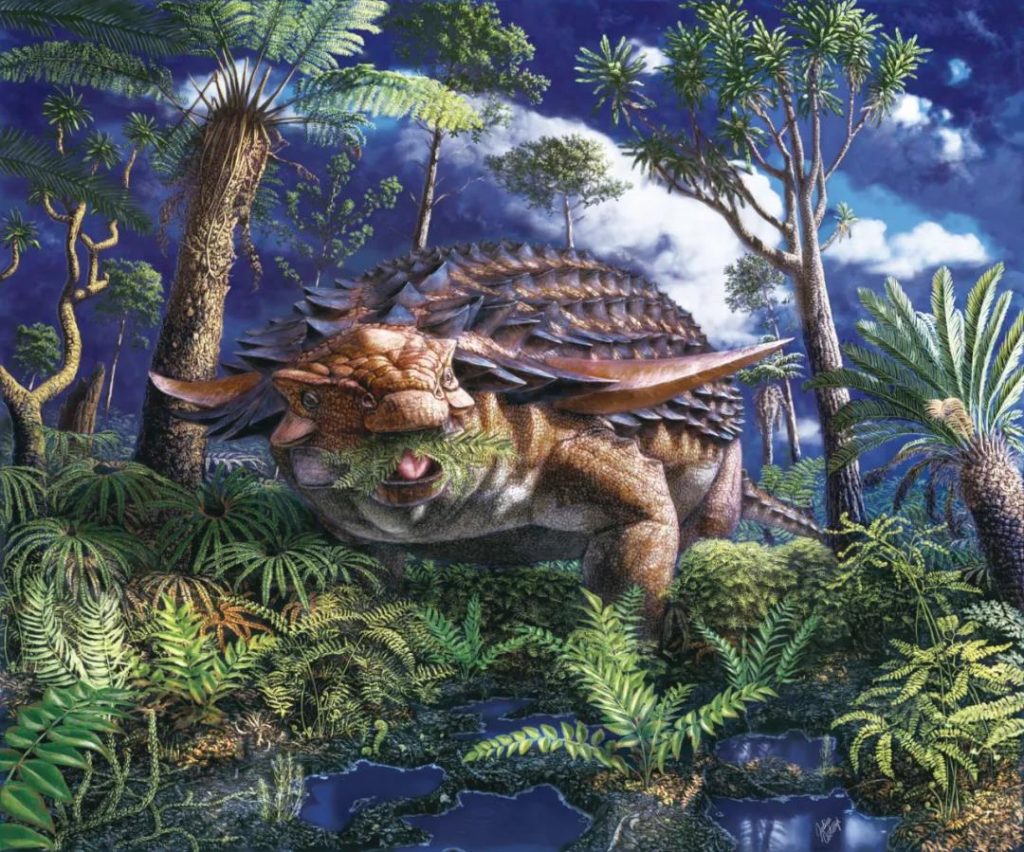
In the movie Jurassic Park, scientists used dinosaur blood from mosquito fossils to resurrect dinosaurs.
In real life, there are many scientists all over the world looking for dinosaur DNA remaining in fossils, hoping to achieve the same feat.
Although it seems not promising at the moment, if dinosaurs really come back to life one day, can they adapt to modern society?
Environment changed
According to archaeological findings, the atmospheric composition of the Jurassic to Cretaceous period in which dinosaurs lived is significantly different from that of modern society.
The oxygen content at that time was 130% to 150% of today’s. That is to say, the oxygen content on the flat ground today, if placed in the Jurassic period, is about equivalent to a plateau above 3000 meters.
What does this mean? For humans, a person who has never lived on a plateau suddenly comes to the plateau area, and it is very normal to have headaches, dizziness, chest tightness, shortness of breath and altitude sickness.
Some people will also experience more severe pulmonary edema, cerebral edema, etc. Diseases and even death.

If altitude sickness occurs in dinosaurs, it will be much more serious than humans, because most dinosaurs weigh far more than humans, and they need more oxygen than humans to maintain normal physiological activities.
Dinosaurs estimated that a 30,000-kilogram Plutosaurus must maintain normal physiological activities and inhale 1,700 liters of air every time it breathes.
If the oxygen content drops, the breathing rate will be faster, and at the same time more energy will be consumed, and more oxygen will be needed. This is an endless loop without solution. I am afraid that dinosaurs will be inseparable from oxygen tanks in modern life.
In addition to oxygen, carbon dioxide during the Jurassic period was also much higher than in modern times. It is estimated that the carbon dioxide content at that time was 6 to 7 times that of the pre-industrial era.
The reduction of carbon dioxide has little effect on respiration, but it has a very significant effect on temperature. This directly caused the temperature in the Jurassic period to be 3℃~4℃ higher than today. You may think this is trivial, but it is not the case for temperature-changing animal dinosaurs.
The modern cousin of dinosaurs, the crocodiles, is very afraid of the cold, and spends most of the winter in hibernation, and moves much more slowly when preying than in summer.
In addition, the temperature can even determine the sex of the crocodile. When the temperature is lower than 30℃, the young alligators are all female, and the male crocodile can be born when the temperature is higher than 30℃. Will the effect of temperature on dinosaurs be as significant as that of crocodiles?
In the era when dinosaurs lived, the climate was very different from today. At that time, there were a large number of tropical rain forests on the earth.
The humidity was very high, and the humid and hot climate made dinosaurs like fish in water.
Looking at the earth today, most of the plains are occupied by humans, with high-rise buildings all over the city, and urban centers are often dry and hot. In the wild environment that gradually changes from flakes to dots, the area of tropical rainforest is decreasing sharply, replaced by sparse temperate shrubs and dry grasslands.
Such an environment does not seem to be suitable for dinosaurs.
Plants are very different
It’s hard to know which plants the herbivorous dinosaurs prefer, but one thing is clear. Compared with the Jurassic and Cretaceous, the types of modern plants have changed a lot, and they once occupied the Jurassic period.
The dominant gymnosperms were also completely suppressed by angiosperms. In other words, no matter what the herbivorous dinosaurs like to eat at the time, in modern times, I am afraid that they have to change their tastes, but this seems not as easy as imagined.
Cycad is an ancient gymnosperm. In the age of dinosaurs, cycad also reached its peak: in the stratum before and after the Cretaceous, paleontologists found the most abundant and diverse cycad fossils.
Since the life period is so similar, it can be inferred that cycads should be one of the foods that dinosaurs often eat, and dinosaurs that can use cycads as food should have evolved their own unique skills, at least it is difficult for humans to resist the “toxicity” of cycads.

Animals in the age of dinosaurs
The more common toxins in cycads are cycads in leaves, cones and seeds. Eating cycad seeds can cause diarrhea and vomiting. Excessive consumption may even risk death from liver failure.
Moreover, according to animal experiments, cyprotein also has carcinogenic effects, and oral feeding to rats can cause liver cancer and kidney cancer. The more unique “poison” is the Nostoc alga that coexists with cycads.
This Nostoc can produce a potential neurotoxin. Cycads absorb this toxin into the plant. The longer the time, the higher the toxin content.
However, once people overeating cycads for a long time, they may suffer from Parkinson’s disease or gradual freezing syndrome (a motor neuron disease often manifested as muscle weakness and atrophy, and bulbar palsy).
Of course, the cycad itself does not want to be human food, nor does it expect to rely on humans to continue life. It is a cooperative partner with dinosaurs.
Some studies clearly pointed out that sauropod dinosaurs would feed on the tender leaves and seeds of cycads, and the vermillion-red fleshy exotesta of cycads evolved to attract large sauropods. After dinosaurs eat and digest the fleshy exoculum, they will expel the seeds inside. In this way, the cycads follow the dinosaur’s footsteps and spread to all parts of the world.
Ginkgo, a close relative of cycad that also flourished in the Jurassic, has similar characteristics. The storage tissue of ginkgo seeds contains 4-methoxypyridoxine (MPN), cyanogenic glycosides and other toxins.
MPN is also a neurotoxin. Excessive consumption can induce epilepsy and convulsions. Hydrolysis of cyanoside will produce highly toxic cyanide. Heating and cooking can decompose toxic substances such as cyanogenic glycosides, but cannot inactivate MPN.
Therefore, if we eat ginkgo seeds raw, we must prepare for first aid. Even if they are cooked, ginkgo seeds cannot be eaten too much. However, dinosaurs did not worry about this. As one of the few tall trees at that time, the existence of Ginkgo biloba just met the dietary needs of large herbivorous dinosaurs.

Dinosaurs like gymnosperms
But, tolerant like dinosaurs, can they tolerate the toxicity of angiosperms? In order to adapt to different environments, angiosperms produce many different metabolites, such as polyols related to low temperature resistance, alkaloids and tannins that resist drought, and betaine and proline in many halophytes.
Some of these metabolites are highly toxic and have the effect of “seeing blood in the throat” for herbivorous animals, and some may just have peculiar smell or special taste, which makes animals uncomfortable to eat.
But how “effect” they are on dinosaurs, we have no way to speculate. In addition, angiosperms will also have fungi and bacteria that live with them. Can dinosaurs tolerate their metabolites? If the dinosaurs were bred directly in the wild, they might be like ancient humans who tasted a hundred herbs, and they didn’t even know what kind of grass they poisoned.
Animals have also changed
Not only plants, but also animals that once competed with dinosaurs on the same land or were unilaterally crushed by dinosaurs have all changed a lot.
If the dinosaurs are resurrected, their first thought may be that they have come to the Lilliputian Land. The fact is true. Because of the good climate and ecological environment of the Cretaceous period, and the high oxygen content in the atmosphere, the animals and plants at that time were very large.
Even small insects such as mosquitoes and flies were 2 to 2 times larger than the current ones. 3 times, some dragonflies can grow to more than one meter long. Not to mention those giant reptiles that can be compared with dinosaurs. Their weight is usually ten tons, which is equivalent to the weight of several or even dozens of elephants.
Animals have become smaller, and the first major impact on carnivorous dinosaurs is food shortages. Generally speaking, the daily food intake of mammals is about 10% of their body weight.
For example, a 4-ton elephant needs to eat more than 300 kilograms of food a day. The weight of most dinosaurs can reach dozens of tons or even hundreds of tons. If their food intake is calculated by the same standard, then a single dinosaur will consume several tons or even dozens of tons of food a day, which is equivalent to several heads or even hundreds of tons. Dozens of elephants.
Can modern society afford such a “big stomach king”? If it lives in the ocean like a blue whale, it may not be a problem, but if it lives on land, the ecological balance is likely to be destroyed quickly.

Can dinosaurs live well in modern times?
Because of their smaller size, modern animals may have no defense against dinosaurs. The average weight of the African elephant is about 3.1 tons. The most significant elephant recorded so far is a male elephant in Angola, Africa.
Its net weight is 13.5 tons, which is equivalent to the size of 9 cars. However, as the largest land animal in modern times, the African elephant is just a small thing in front of the Tyrannosaurus rex.
Tyrannosaurus rex has the strongest jaw bone ever made on land. It is very easy to kill an elephant. More often, the elephant may not even have the chance to escape. Animals other than elephants are even smaller.
To Tyrannosaurus, rhinos and hippos are like tigers catching roe deer, while zebras and antelopes are like tigers catching rabbits and mice. Once the dinosaurs appeared in the wild environment on a large scale, the horror of corpses across the wild will soon appear.
In this way, even if the dinosaurs are really resurrected, they can only survive in the zoo built for them by humans like a movie. However, even so, this model may not last long, because dinosaurs consume too many resources. And as the number of dinosaurs increases after reproduction, will they threaten human society like “Jurassic Park”? At that time, for their own safety, will mankind have to exterminate them again?
For dinosaurs, maybe not resurrecting is a good thing, just let their majestic figure be active only in the imagination.
Comments